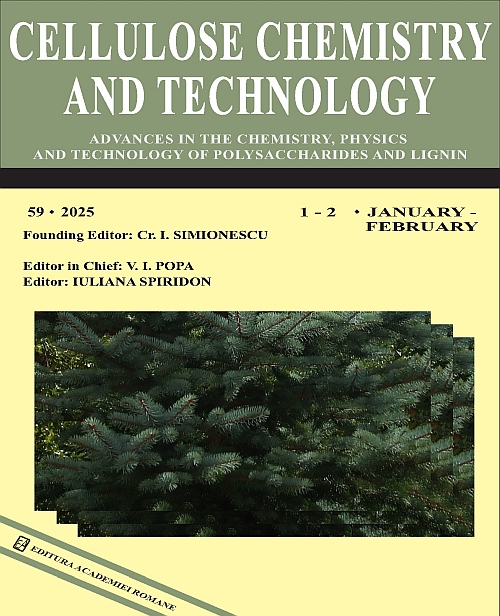|
Title
Study of balsamic poplar extract obtained from different parts of
the plant used as biostimulant
Authors
ANNA MECHSHANOVA, VLADILEN POLYAKOV, NATALYA BAZARNOVA,
TEMENUZHKA RADOYKOVA
Received
July 7, 2024
Published
Volume 59 Issue 1-2 January-February
Keywords
Populus balsamifera, extraction, poplar, ethanol, cabbage seeds
Abstract
Тhe qualitative and quantitative composition of extracts obtained from poplar wood waste (buds, leaves, bundles, twigs)
generated from logging activities was investigated. Then, the effects of the poplar extract on the morphogenesis,
physiological and biochemical parameters, and productivity of white cabbage plants were studied and were found to be
significant. Thus, for the plants grown from seeds soaked in a 0.03% aqueous emulsion of the extract, the respiration rate
was 2.7 mg CO2 per 1 g of dry matter, which is 540% higher in relation to control 1 (C1), and 270% in relation to control
2 (C2), and a higher yield was obtained compared to other treatment options. The respiration intensity and productivity
of plants that received foliar feeding with a 0.003% aqueous emulsion of the extract also exceeded the corresponding
indicators in the control samples. Thus, the respiration intensity in the initial growth phase of the rosette and roots was
1.9 mg CO2 per 1 g of dry matter, which is 380% in relation to control 1 (C1), and 190% in relation to control 2 (C2). The
yield obtained was 1008 c/ha.
Link
https://doi.org/10.35812/CelluloseChemTechnol.2025.59.11
|



